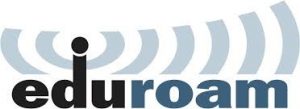 What happens when two UNC universities with shared resources decide to both implement eduroam–and confuse your wireless configuration while they’re at it?
What happens when two UNC universities with shared resources decide to both implement eduroam–and confuse your wireless configuration while they’re at it?
In this case, staff of UNC-Chapel Hill Information Technology Services and at UNC-Asheville worked together to implement a complex solution to resolve the issue. These staffers were able to ensure that each person at the institutions was able to connect to his or her own correct space to ensure proper individualized access and rights to their respective services.
Complication arose when both campuses adopted eduroam
Things got complex when UNC-Asheville deployed eduroam last spring, just as Carolina did last fall, and when UNC-Asheville started planning to occupy surrounding building space that had previously been exclusively for UNC-Chapel Hill.
Engineers for the services realized that cohabitation was going to be nearly impossible, both with managing radio spectrum and with dealing with association issues that would arise from both institutions running eduroam as an SSID in such close proximity to each other. Asheville students and staff might accidentally connect to Carolina’s network and the UNC-Chapel Hill pharmacy students and staff might accidentally connect to the UNC-Asheville network. Each person, however, needs to connect to his or her own correct space to ensure proper individualized access and rights to their respective services. “What we have done is incredibly unusual,” said Ryan Turner, Manager, Communication Technologies Network Operations.
Wireless solution was complex

What was the solution? Remove Carolina’s access points at the Asheville campus, which clears the airways, replace those access points with UNC-Asheville access points, and then create a backdoor link between the two networks to trunk UNC VLANs to the UNC-Asheville network.
This means faculty, staff and students working at UNC-Chapel Hill’s satellite pharmacy program, located at UNC-Asheville, are no longer connecting to wireless access points managed by UNC-Chapel Hill. Instead, they connect entirely to UNC-Asheville’s wireless access points, and through a cooperation between the two institutions, are treated no differently than if they were connected directly to UNC-Chapel Hill’s own network
The cutover during spring break 2016 worked without a hiccup, Turner said. When UNC-Chapel Hill users connect to a UNC- Asheville access point, UNC Asheville recognizes the @unc.edu realm and assigns those devices to a UNC-Chapel Hill VLAN. This works pervasively across the entire UNC Asheville campus and not just at the two locations that primary house the satellite program.
“The change was totally transparent to users,” he said.
“One of the major goals with all of this,” Turner added, “was we didn’t want the Chapel Hill folks at UNC-Asheville to feel different.” Whether they’re at the Asheville campus or in Chapel Hill, their experience should be the same.
One key to the successful project was the collaboration between ITS, the School of Pharmacy IT support staff and the networking staff at UNC-Asheville. The details were hashed out through a video conference; Ryan Turner coordinated the necessary work between all parties, including James Joyce, a UNC-Chapel Hill Videoconference Analyst at UNC-Asheville, and Tim Burns, a Network Administrator for UNC Asheville.
Joyce “did an outstanding job” of getting everything ready, communicating with ITS and managing the transition, Turner said.
“This is a complex solution,” Turner added, that will require continued collaboration whenever connectivity issues arise.
Ability to move freely

“Before this migration, the Eshelman School of Pharmacy students had to navigate through a hodgepodge of network choices in order to acquire wireless access for their computers and mobile devices,” Joyce said. “This tended to ‘tether’ them to the few areas on campus where we had established UNC-Chapel Hill access points. Now, they can move freely from building to building without having to change what wireless service they use. It has been a big help for them.”
Joyce added: “In my time with UNC-Chapel Hill, both with the School of Medicine and the Eshelman School of Pharmacy, I have come to rely on Information Technology Services to complete the tasks requested of them with speed, diligence and accuracy. The migration of the eduroam service from UNC-Chapel Hill access points to UNC-Asheville units was no exception. They were thorough and timely in their support of this initiative. Jim Gogan and Ryan Turner, in particular, were quick to respond where there were questions to be answered.”
